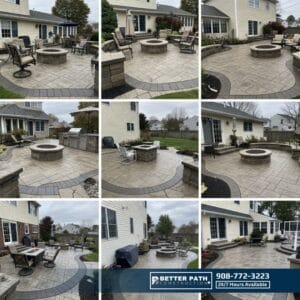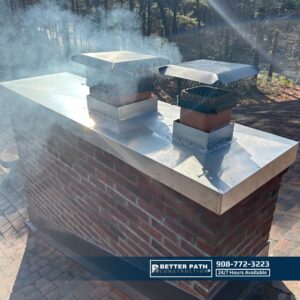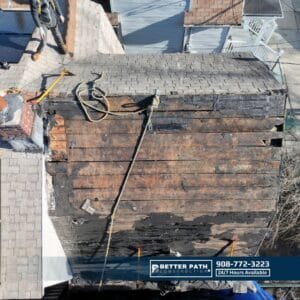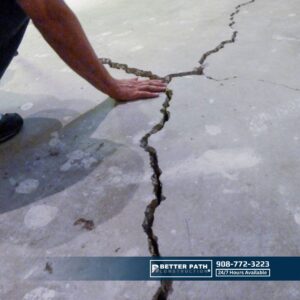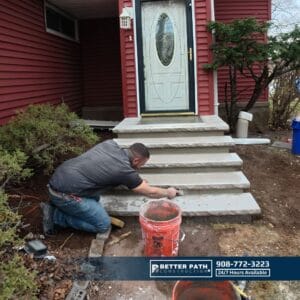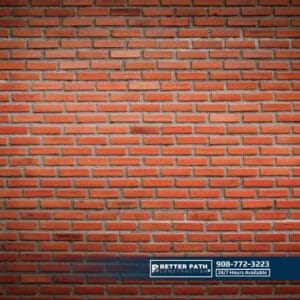Wondering how to know what size chimney liner you need? Fortunately, the answer lies in checking your heating appliance, chimney dimensions, and local codes. Specifically, a correct liner size ensures efficient venting and prevents creosote buildup. For instance, wood stoves often need 6-inch liners, while gas appliances may require 4- or 5-inch ones. Moreover, measuring your flue and following manufacturer guidelines is key. At Better Path Construction LLC in Little Falls, NJ, we help New Jersey homeowners choose liners that boost safety and performance.
Why Chimney Liners Matter
A chimney liner protects your chimney by guiding smoke, gases, and heat out safely. Additionally, it shields masonry from damage. Without a proper liner, you risk chimney fires or carbon monoxide leaks. Therefore, understanding how to know what size chimney liner you need is crucial.
For example, the National Fire Protection Association (NFPA) reports heating equipment causes 13% of home fires, about 38,881 yearly from 2019-2023 [NFPA, 2023]. Furthermore, chimney fires, often due to poor venting, add over 25,000 cases annually [NFPA, 2023]. In New Jersey’s cold winters, a well-sized liner ensures safety and efficiency.
At Better Path Construction LLC in Little Falls, NJ, we see undersized liners cause backdrafts in older homes like those in Paterson. Conversely, oversized liners lead to condensation in modern setups. Thus, proper sizing is our priority.
Types of Chimney Liners
Chimney liners vary by material, each suited to specific fuels. For example, stainless steel liners (304 or 316 grades) are flexible and durable, ideal for wood, gas, or oil. They range from 3 to 8 inches round or up to 13×13 inches rectangular [Lindemann Chimney Supply, 2024]. Meanwhile, clay tile liners, common in masonry chimneys, come in 4×8 to 24×24 inches [Rockford Chimney Supply, 2024]. Additionally, cast-in-place liners, made from poured cement, need professional installation.
Importantly, material choice affects sizing. Stainless steel suits retrofits, while clay fits new builds. Consequently, we at Better Path Construction LLC in New Jersey often recommend stainless steel for its durability against humidity.
Factors for Choosing Liner Size
To determine how to know what size chimney liner you need, consider key factors. Specifically, your appliance, chimney height, and flue size are critical. Here’s how each works.
Appliance Type and BTU Output
First, your appliance’s specs set the baseline. Check the manual for flue size; for instance, wood stoves often need 6-inch liners, but high-BTU ones may need 8 inches [Chimney Safety Institute, 2024]. In contrast, gas appliances use 4- or 5-inch liners due to cooler exhaust.
John Lindemann from Lindemann Chimney Supply says, “Match the liner to the appliance’s exhaust hole. Too small risks blockages; too large cuts efficiency” [Lindemann Chimney Supply, 2024]. For example, in Essex County, we at Better Path Construction LLC see mismatched oil-fired system liners cause issues. Thus, matching size to output is critical.
Chimney Height and Draft
Next, chimney height impacts draft. For chimneys under 25 feet, use a 10:1 ratio of fireplace opening to liner area. However, for those over 25 feet, use 12:1 [Chimney Safety Institute, 2024]. Also, measure from thimble to crown, adding a few inches [Rockford Chimney Supply, 2024].
In New Jersey, we’ve installed liners in 35-foot chimneys needing larger diameters for draft [Better Path Construction LLC, 2024]. Moreover, poor sizing contributes to 46% of heating fires from December to February [NFPA, 2023]. Therefore, height is key for safety.
Flue Shape and Size
Another factor is your flue’s dimensions. For rectangular flues, multiply length by width; a 6×10-inch flue needs an 8-inch round liner [Lindemann Chimney Supply, 2024]. Similarly, round flues match diameter directly.
Common sizes are 8×8 inches or 6-inch diameters [Chimney Safety Institute, 2024]. In Clifton and Wayne, NJ, we at Better Path Construction LLC measure flues accurately, accounting for bends needing flexible liners.
How to Measure for a Chimney Liner
To learn how to know what size chimney liner you need, follow these steps:
- Check Appliance Specs: Find the exhaust outlet size in the manual. For example, a 4-inch boiler flue needs a matching liner [Chimney Safety Institute, 2024].
- Measure Chimney Height: Use a tape from crown to smoke chamber. Add 3-4 inches [Rockford Chimney Supply, 2024].
- Calculate Fireplace Area: For fireplaces, measure length x width. Up to 600 square inches needs a 9-inch liner [Northline Express, 2024].
- Assess Flue Size: Check dimensions with a flashlight. Clay tiles (8×13 inches) fit 6- to 8-inch liners [Chimney Safety Institute, 2024].
- Account for Multiple Appliances: Size for the largest BTU output [Heating Help Forum, 2024].
Rockford Chimney Supply advises, “Measure twice to avoid draft issues” [Rockford Chimney Supply, 2024]. Accordingly, we at Better Path Construction LLC in Little Falls, NJ, offer free consultations for accurate measurements.
Tools for Measuring
Use a flashlight, tape measure, ladder, and chimney brush for debris. Additionally, for complex chimneys, inspection cameras ensure precision.
Common Liner Sizes and Uses
Standard sizes clarify how to know what size chimney liner you need:
- Round Liners: 3-8 inches for gas/oil; 6-8 inches for wood [Northline Express, 2024].
- Rectangular Liners: 4×8 to 13×13 inches, common in older NJ homes [Chimney Safety Institute, 2024].
For fireplaces up to 942 square inches, an 11-inch liner works; larger ones need 12 inches [Rockford Chimney Supply, 2024]. For instance, in New Jersey, we often use 6-inch stainless steel for wood stoves.
Mistakes to Avoid
Unfortunately, sizing errors are common. For example, undersized liners cause blockages and fire risks [NFPA, 2023]. Conversely, oversized liners lead to condensation [Chimney Safety Institute, 2024]. Also, ignoring bends makes installation tough [Rockford Chimney Supply, 2024].
Moreover, overlooking New Jersey codes is a mistake. Chimneys must extend 2 feet above structures per IRC [IRC, 2024]. Heating Help Forum warns, “Minimum 8×8-inch liners for basic setups” [Heating Help Forum, 2024]. Thus, we at Better Path Construction LLC fix these issues in Little Falls, NJ.
New Jersey Regulations
In New Jersey, liners are required for gas appliances in masonry chimneys [IRC, 2024]. Additionally, connectors must enter 6 inches above the chimney bottom [IRC, 2024]. Wood-burning liners need UL standards.
Consequently, our team at Better Path Construction LLC in Little Falls, NJ, ensures compliance in areas like Passaic County.
Permits and Costs
Many ask about permits. In New Jersey, major relining needs permits [New Jersey Department of Community Affairs, 2024]. Furthermore, costs range from $1,500 to $5,000 [HomeAdvisor, 2024]. While DIY measuring is possible, professional installation prevents sealing errors.
Expert Insights
“Proper sizing ensures safety and function,” says an All Pro Chimney specialist [All Pro Chimney, 2024]. Similarly, Trade Price Flues notes, “Diameter depends on heat output and connector size” [Trade Price Flues, 2024]. Also, Northline Express advises, “Measure exhaust for the right size” [Northline Express, 2024].
At Better Path Construction LLC in Little Falls, NJ, we follow these principles for safe installations.
FAQs
Poor draft, indoor smoke, or odors suggest a mismatch. Thus, check appliance specs to confirm.
Yes, but it reduces efficiency and risks condensation. Therefore, follow manufacturer guidelines.
Per NFPA, inspect annually before winter. New Jersey’s weather accelerates wear.
Conclusion
Knowing how to know what size chimney liner you need prevents hazards like the 352,000 annual home fires [NFPA, 2023]. Since winter fire risks are high, act now.
At Better Path Construction LLC in Little Falls, NJ, our certified team serves New Jersey with expert installations. Therefore, contact us for a free inspection and quote. Ensure your chimney is safe and efficient—call today!





